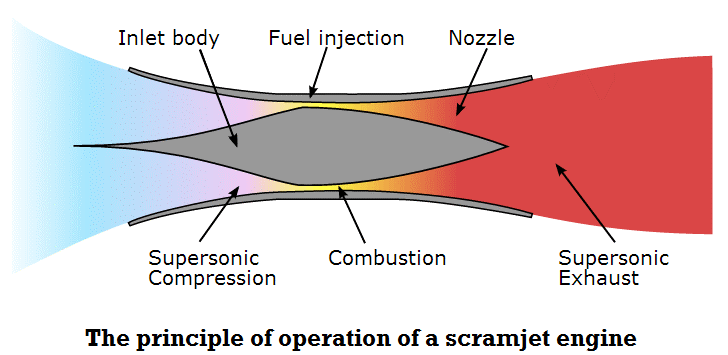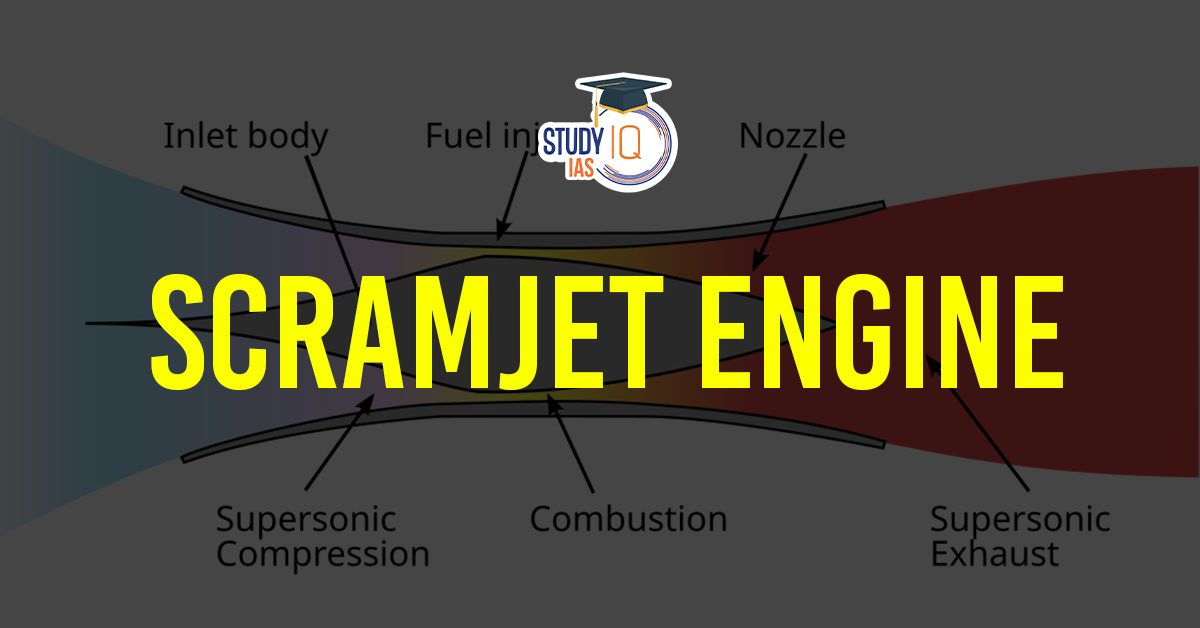Table of Contents
Context: DRDO has successfully conducted the 1st Active Cooled Scramjet Combustor Ground Test in India, running for 120 seconds.
What is a Scramjet Engine?
A Supersonic Combustion Ramjet engine is an air-breathing propulsion system designed for hypersonic speeds.
How It Works
- Air Compression: Incoming air is compressed due to the vehicle’s high speed (no turbines or compressors).
- Fuel Injection: Endothermic fuel is injected into the compressed air.
- Supersonic Combustion: Combustion occurs at supersonic speeds, producing thrust.

Advantages
- High Efficiency: Utilizes atmospheric oxygen, reducing the need to carry oxidizers.
- Reduced Complexity: No moving parts.
- Capability: Enables speeds greater than Mach 5.
Applications
- Hypersonic missiles,
- Spaceplanes and
- Reusable launch vehicles.
About Hypersonic Missiles
Hypersonic missiles are advanced weapon systems capable of travelling at speeds exceeding Mach 5 (five times the speed of sound, approximately 6,125 km/h).
Key Characteristics
- Speed: Hypersonic missiles travel at speeds of Mach 5 or higher, enabling them to cover vast distances in a fraction of the time compared to traditional missiles.
- Manoeuvrability: Unlike ballistic missiles, which follow a predictable arc, hypersonic missiles can manoeuvre during flight, making them challenging to detect and intercept.
- Trajectory: They fly within the atmosphere (at altitudes of 20-100 km), avoiding traditional ballistic arcs and complicating radar tracking.
Types of Hypersonic Missiles
- Hypersonic Glide Vehicles (HGVs): HGVs are launched by rockets and glide to their targets at hypersonic speeds.
- Hypersonic Cruise Missiles: They are powered by scramjet engines, maintaining sustained hypersonic speeds throughout their flight.
|
Fact |
Mach Number: The ratio of the speed of an object to the speed of sound in the same medium is called the Mach number.
|


 Nipah Virus (NiV): Structure, Testing Me...
Nipah Virus (NiV): Structure, Testing Me...
 What is Ham Radio and its Purpose?
What is Ham Radio and its Purpose?
 INS Udaygiri, Key Features, Capabilities...
INS Udaygiri, Key Features, Capabilities...





















